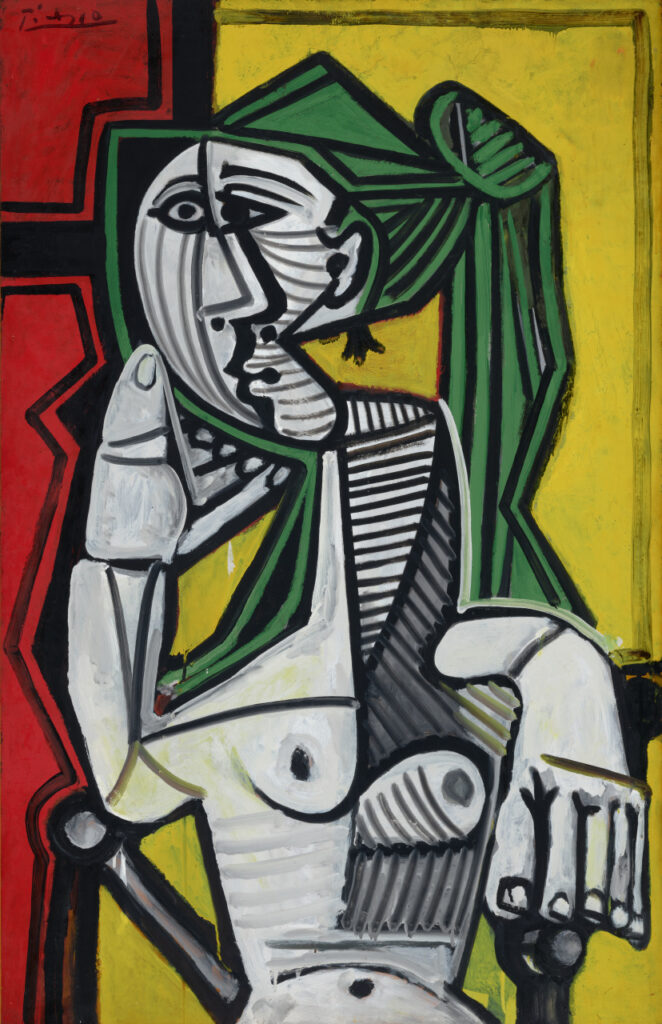Femme assise, fond rouge et jaune (Seated Woman, Red and Yellow Background) (work of art)
Artwork Info
Key Ideas
- This painting is an example of cubism, a 20th-century art style that breaks down and simplifies an object into abstract, geometric shapes. Cubist paintings show a subject (or object) from many angles at once.
- Pablo Picasso was a Spanish painter and sculptor who spent most of his life in France. He was one of the founders of cubism.
- The woman portrayed in this painting was a French artist who was in a long-term relationship with Picasso.
Learn More
Spanish artist Pablo Picasso and a French painter named Georges Braque (1882–1963) invented cubism in the early 20th century. Cubism is an artistic style that breaks objects and figures down into distinct shapes, to show various viewpoints of a subject at the same time.
The woman represented in this work was a French artist named Françoise Gilot. She met Picasso in 1943, and they were in a romantic relationship for 10 years. Their relationship was ending around the time that Picasso created this painting. He combined different views of Gilot to create a single abstract portrait. Her face and body are broken into abstract, geometric shapes. The left and right sides of the portrait face different directions. Parts of her body are shown from different perspectives.
Gilot is said to be the only woman Picasso dated who broke up with him. She was a successful artist for many years. She lived to be 101 years old.
A head is a matter of eyes, nose, mouth, which can be distributed in any way you like.
Pablo Picasso
Additional Resources
Resources for Teachers
- Read an article about cubism.
- Watch a documentary about Picasso.
- View a self-portrait by Françoise Gilot (that she painted a year after Picasso created this painting).
Resources for Students
- Watch a video about cubism.
- View paintings by Georges Braque.
- Watch a video of Picasso painting.
- View a self-portrait by Françoise Gilot.

